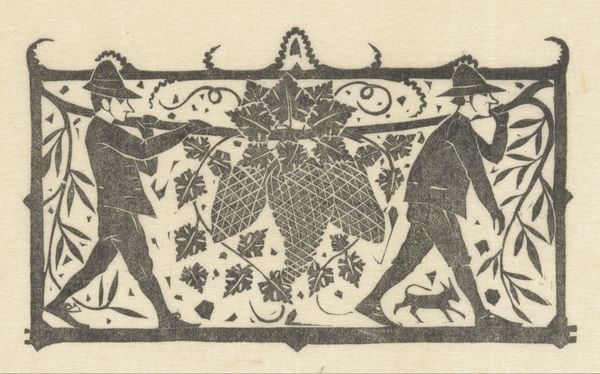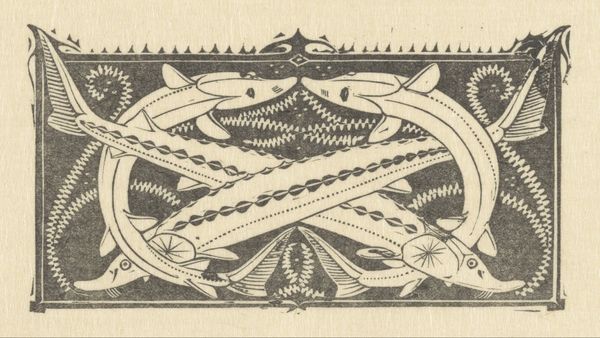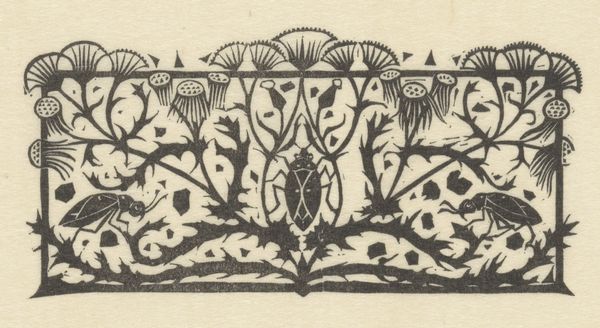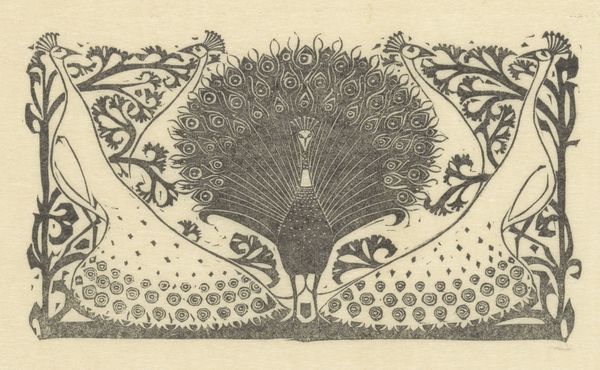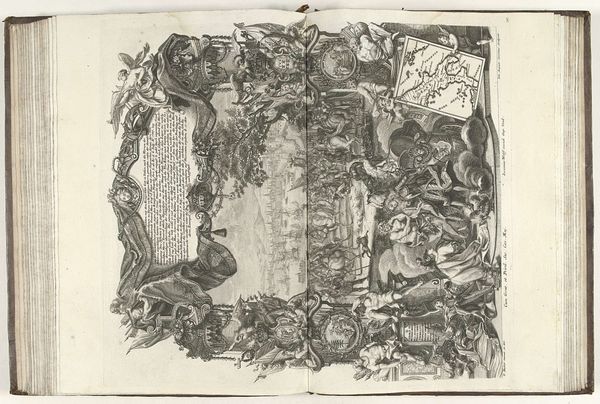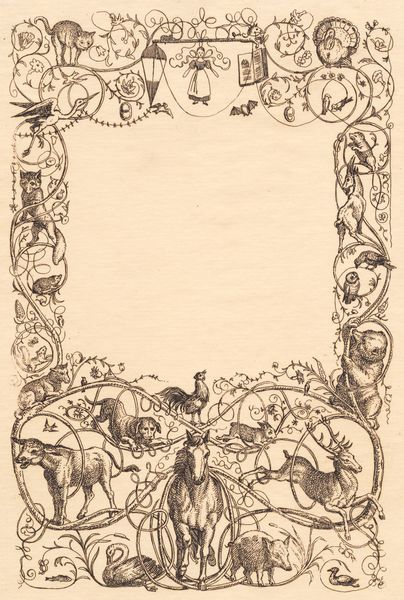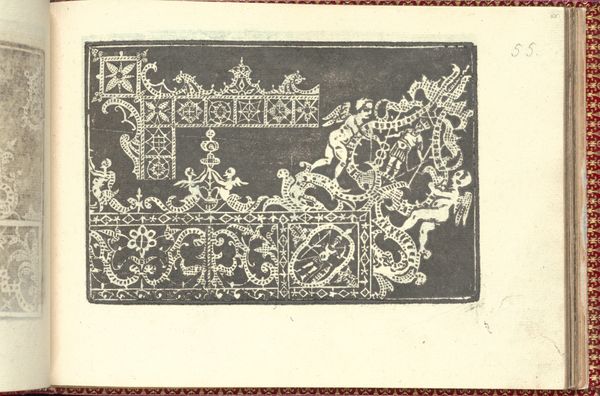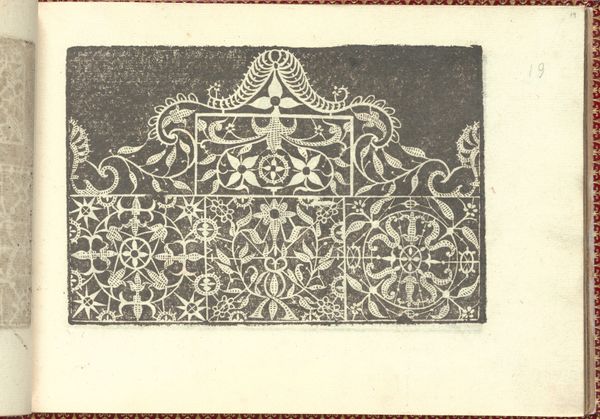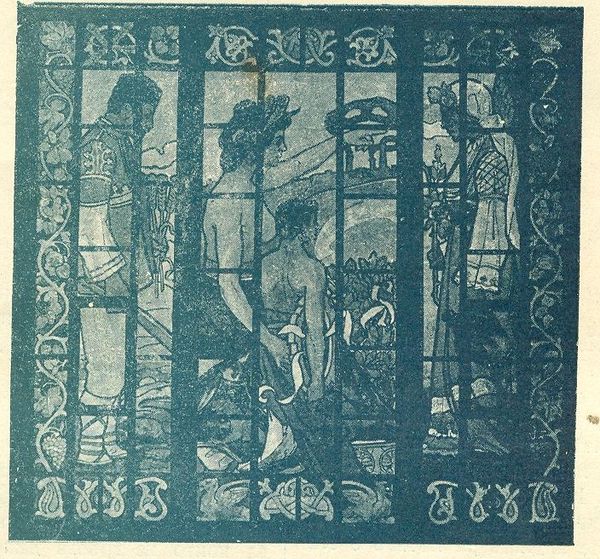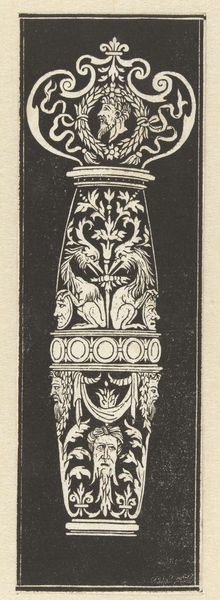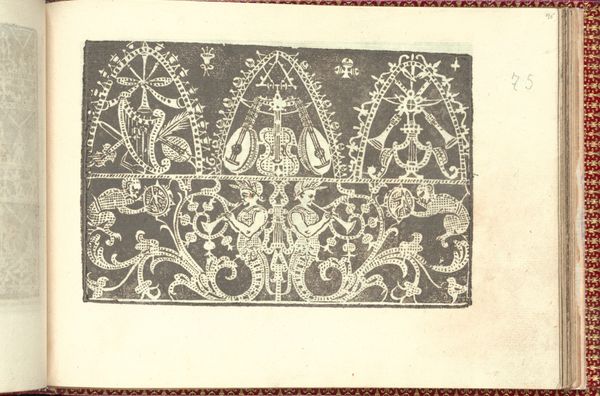
drawing, graphic-art, print, ink
#
drawing
#
graphic-art
#
pen drawing
# print
#
pen illustration
#
book
#
landscape
#
figuration
#
ink
#
line
#
russian-avant-garde
Copyright: Public domain
Curator: So, let's discuss Boris Kustodiev’s “From the books of R. Notgaft. Bookplate,” created in 1912, using ink and printmaking techniques. What’s your initial reaction? Editor: It strikes me as wonderfully evocative, almost like a dreamscape framed by nature. The stark black ink against the pale background creates a compelling, albeit simple, contrast. There is a certain nostalgia and yearning communicated to me. Curator: Definitely. Considering the process, the meticulousness required for printmaking, and the social function of bookplates as signifiers of ownership and intellectual status in the early 20th century, we get a glimpse into a particular type of cultural production. Think of the labour involved in carving the design. Editor: Exactly. The figures flanking the cityscape, who seem to be presenting it—almost guarding it, they're women. What’s the social context for the artist in 1912? The work smacks of folk romanticism, a movement rife with complicated political and gendered connotations. Are the women allegorical? Are they romantic ideals in dialogue with Russian identity and womanhood at the cusp of turbulent years to come? Curator: Good point. Kustodiev was deeply involved in artistic circles exploring national identity, and his engagement with printmaking placed his art within a broader sphere of craft and production, and Russian avant-garde—not merely high art. These graphic works enabled circulation and wider viewership. It invites considerations about the value of artisanal and folk practices during a period of significant social and technological change. Editor: Right. Seeing how these folk motifs intertwine with personal identity through a nameplate underscores the blending of private and collective narratives, revealing an interesting perspective on ownership. Curator: Indeed. Understanding this intersection helps unpack complex social fabric—how objects mediate relations and convey meaning. Editor: It also raises issues about how female identity is shaped and reinforced. It provides interesting avenues of discussion regarding identity, gender, and the role of symbolism in articulating the narrative during Kustodiev's time. Curator: Absolutely, a layered piece which bridges art, labour, and societal values. Editor: A fitting little jewel from which to ponder history.
Comments
No comments
Be the first to comment and join the conversation on the ultimate creative platform.

